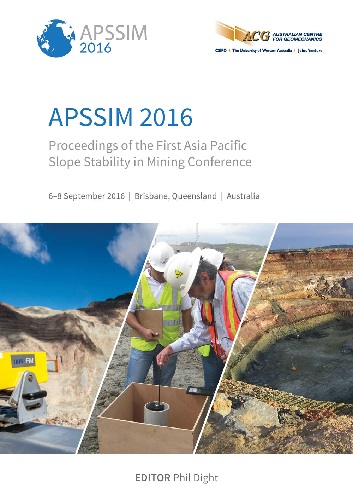Relict structure in saprolite — a case study

|
Authors: McKenzie, L |
DOI https://doi.org/10.36487/ACG_rep/1604_03_McKenzie
Cite As:
McKenzie, L 2016, 'Relict structure in saprolite — a case study', in PM Dight (ed.), APSSIM 2016: Proceedings of the First Asia Pacific Slope Stability in Mining Conference, Australian Centre for Geomechanics, Perth, pp. 127-134, https://doi.org/10.36487/ACG_rep/1604_03_McKenzie
Abstract:
This paper presents a case study where relict structure in saprolite has contributed to ongoing instability of a slope within an operational open pit mine. The study provides the pre-mining structural understanding, discusses slope performance, including key factors contributing to instability, and examines the current structural model. The paper shows that structural patterns within bedrock also occur in the saprolite. It highlights that, although it is difficult to obtain data on relict structure using borehole methods, slope failure due to relict structure should be recognised because it does occur. Design uncertainty and risks associated with this type of instability needs to be identified in the early stages of the mine planning process.
Keywords: saprolite, relict structure, slope performance, management strategies
References:
Aydin, A 2006, ‘Stability of saprolitic slopes: nature and role of field scale heterogeneities’, Natural Hazards and Earth System Science, vol. 6, pp. 89–96.
Deere, DU & Patton, FD 1971, ‘Slope stability in residual soil slopes’, in Proceedings of the 4th Panamerican Conference on Soil Mechanics and Engineering Foundation, American Society of Engineers, New York, no. 1, pp. 87–170.
Fergusson, CL 2003, ‘Ordovician-Silurian accretion tectonics of the Lachlan Fold Belt, southeastern Australia’, Australian Journal of Earth Sciences, vol. 50, pp. 475–490.
ISRM (International Society of Rock Mechanics) 1981, Rock Characterization, Testing and Monitoring: ISRM Suggested Methods, ET Brown (ed.), Pergamon Press, Oxford.
© Copyright 2025, Australian Centre for Geomechanics (ACG), The University of Western Australia. All rights reserved.
View copyright/legal information
Please direct any queries or error reports to repository-acg@uwa.edu.au
View copyright/legal information
Please direct any queries or error reports to repository-acg@uwa.edu.au